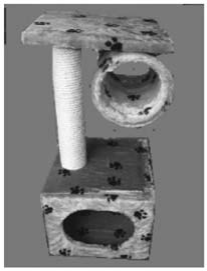
COMMISSION IMPLEMENTING REGULATION (EU) No 350/2014of 3 April 2014 concerning the classification of certain goods in the Combined Nomenclature- "Official Journal of the European Union", No L 104/4 of 8.4.2014 - |
THE EUROPEAN COMMISSION,
Having regard to the Treaty on the Functioning of the European Union,
Having regard to Council Regulation (EEC) No 2658/87 of 23 July 1987 on the tariff and statistical nomenclature and on the Common Customs Tariff(1), and in particular Article 9(1)(a) thereof,
_____________
(1) OJ L 256, 7.9.1987, p. 1.
Whereas:
(1) In order to ensure uniform application of the Combined Nomenclature annexed to Regulation (EEC) No 2658/87, it is necessary to adopt measures concerning the classification of the goods referred to in the Annex to this Regulation.
(2) Regulation (EEC) No 2658/87 has laid down the general rules for the interpretation of the Combined Nomenclature. Those rules apply also to any other nomenclature which is wholly or partly based on it or which adds any additional subdivision to it and which is established by specific provisions of the Union, with a view to the application of tariff and other measures relating to trade in goods.
(3) Pursuant to those general rules, the goods described in column (1) of the table set out in the Annex should be classified under the CN code indicated in column (2), by virtue of the reasons set out in column (3) of that table.
(4) It is appropriate to provide that binding tariff information issued in respect of the goods concerned by this Regulation which does not conform to this Regulation may, for a certain period, continue to be invoked by the holder in accordance with Article 12(6) of Council Regulation (EEC) No 2913/92(2). That period should be set at three months.
______________
(2) Council Regulation (EEC) No 2913/92 of 12 October 1992 establishing the Community Customs Code (OJ L 302, 19.10.1992, p. 1).
(5) The Customs Code Committee has not issued an opinion within the time limit set by its Chairman,
HAS ADOPTED THIS REGULATION:
Article 1
The goods described in column (1) of the table set out in the Annex shall be classified within the Combined Nomenclature under the CN code indicated in column (2) of that table.
Article 2
Binding tariff information which does not conform to this Regulation may continue to be invoked in accordance with Article 12(6) of Regulation (EEC) No 2913/92 for a period of three months from the date of entry into force of this Regulation.
Article 3
This Regulation shall enter into force on the twentieth day following that of its publication in the Official Journal of the European Union.
This Regulation shall be binding in its entirety and directly applicable in all Member States.
Done at Brussels, 3 April 2014.
For the Commission,
On behalf of the President,
Algirdas ŠEMETA
Member of the Commission
ANNEX
Description of the goods |
Classification (CN code) |
Reasons |
(1) |
(2) |
(3) |
Article consisting of a wooden box covered on the inside and outside with textile fabric. The box has an opening in the front allowing a cat to enter it and is big enough for a cat to sleep in it. On top of the box a paperboard tube is mounted vertically. The tube is covered with a cord of sisal fixed to it. The cord is made of spun sisal fibres and measures more than 20 000 decitex. |
6307 90 98 |
Classification is determined by general rules 1, 3(b) and 6 for the interpretation of the Combined Nomenclature (GIR), note 7(f) to Section XI and the wording of CN codes 6307, 6307 90 and 6307 90 98. |
(*) The photograph is purely for information.
